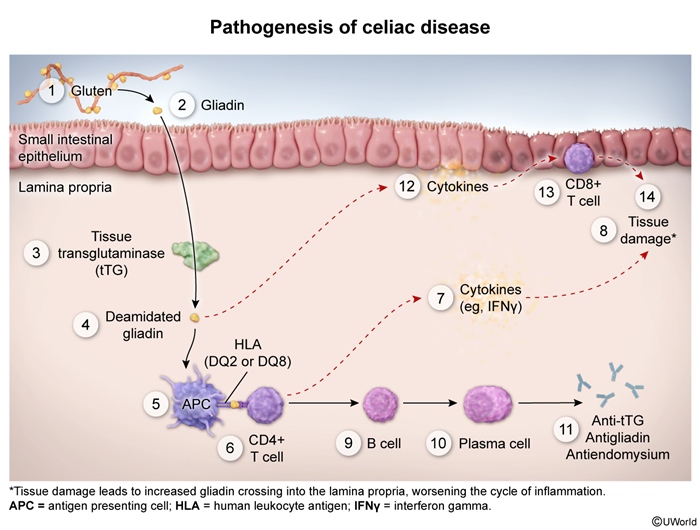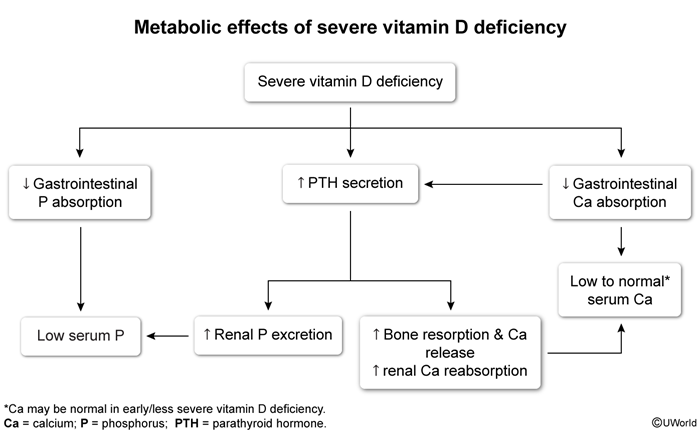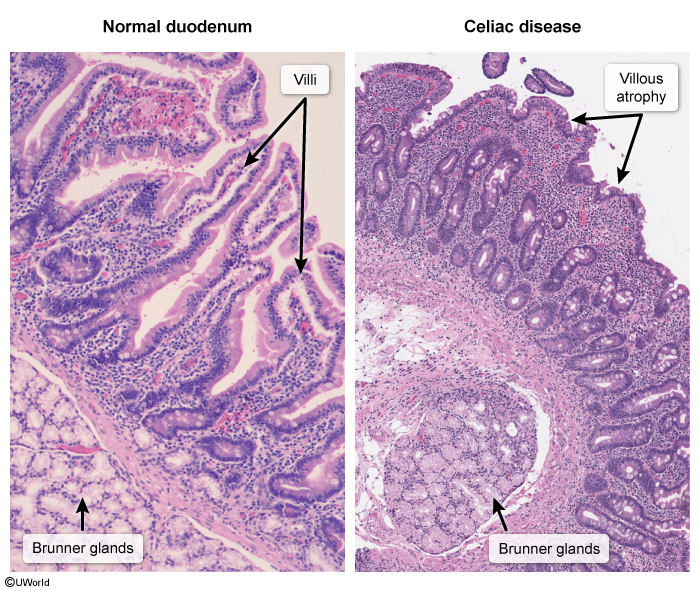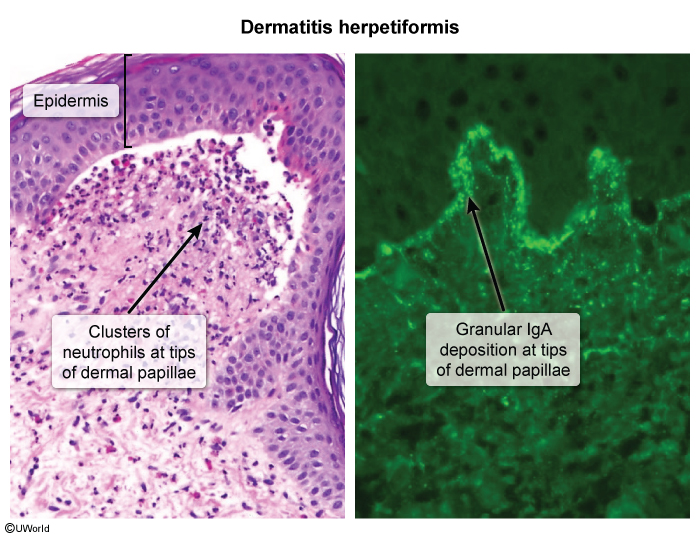Celiac Disease
Article Sections
Introduction
Celiac disease (gluten-sensitive enteropathy, or celiac sprue) is a common chronic malabsorption syndrome that occurs due to an immune reaction to dietary gluten in genetically susceptible individuals. Chronic inflammation damages the small intestine and ultimately leads to symptoms of malabsorption.
Pathophysiology and risk factors
Gluten is a protein found in wheat, barley, and rye that is digested into gliadin and other peptides in the lumen of the small intestine (Figure 1). Gliadin crosses the small intestine epithelium into the lamina propria, where it is deamidated by tissue transglutaminase. The removal of an amide group allows gliadin to strongly bind MHC molecules HLA-DQ2 and HLA-DQ8 on the surface of antigen-presenting cells. Once bound, gliadin is presented to CD4+ T cells, resulting in:
Continue Learning with UWorld
Get the full Celiac Disease article plus rich visuals, real-world cases, and in-depth insights from medical experts, all available through the UWorld Medical Library.
Figures


Images

